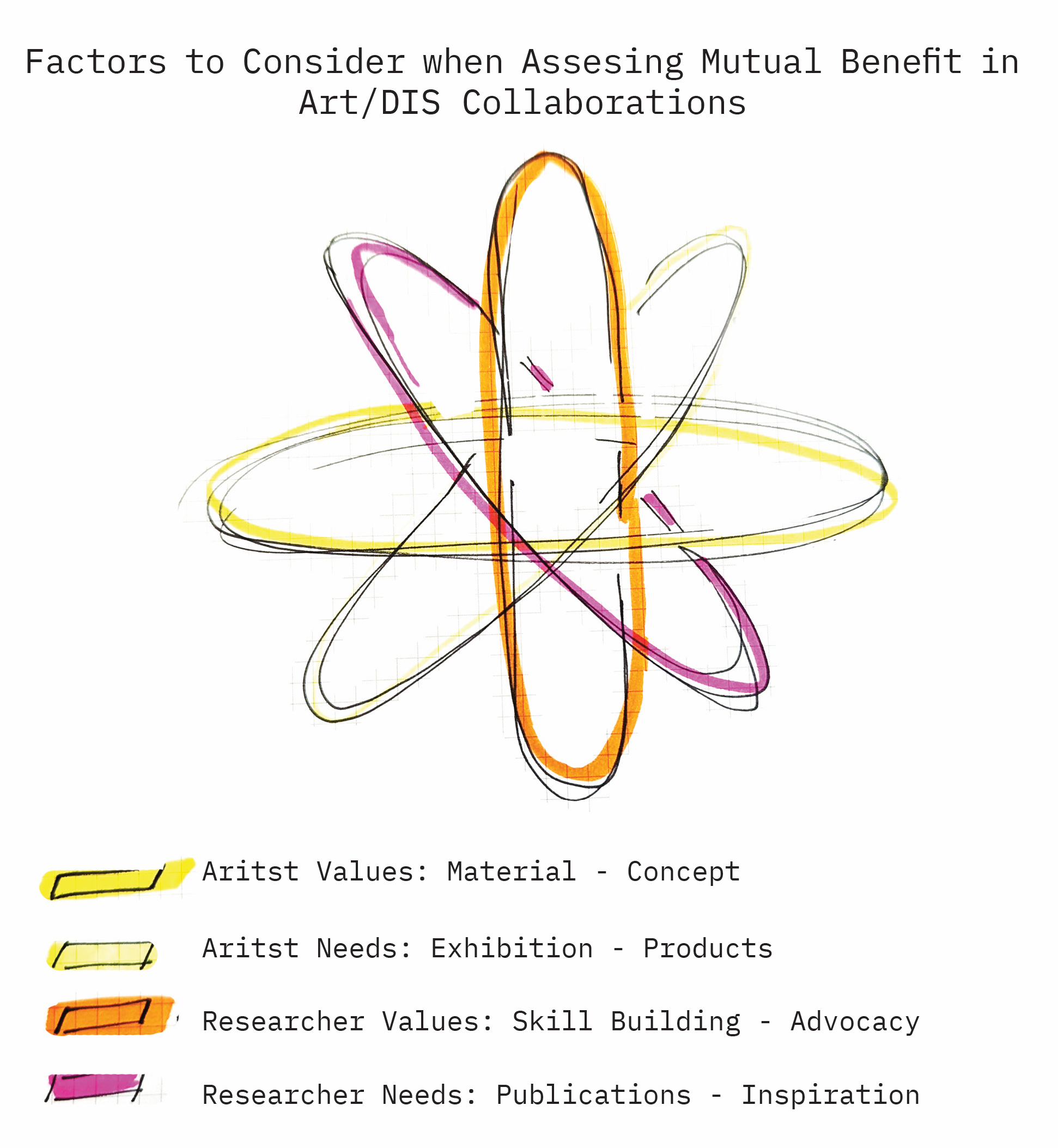About
While the DIS community has long worked to draw connections between artistic practice and design research, the recent artistic or material turns in human-computer interaction and design research have led to a series of studies that have explored collaboration with artists to generate research artifacts and insights. In some cases, a collaboration is forged between a researcher and an artist. In others, artists are brought in to provide feedback on a research product as “expert users”. In recognition of the unequal power dynamics between research affiliated with engineering (a field that is generally well-resourced), and artists (who historically have less access to resources in comparison to engineers), as well as the infrastructural challenges for practitioner collaboration in academia, the model of the artist residency has emerged as a possible approach to DIS-artist collaboration. Collectively, such residencies simultaneously aim to recognize the value artists bring to engineering research and support mutual benefit for artists and researchers.
We, as organizers, have either hosted residencies or other forms of sustained collaboration within our research labs or have participated in research residencies as an artist collaborator. While varying in domain and duration (between 1-12 weeks) our collaborations have all centered on projects that emerge between the interests of the parties involved. Our goal in convening this workshop is
- to share our collective experiences and struggles with these collaborative residency models and
- engage the broader community of DIS researchers in identifying the next steps for recognizing and supporting the inclusion of artists in the research we perform.
In recognition of the breadth of terrain that artist residencies cover, as well as the fluidity of associations between research and artist, we focus our one-day workshop specifically on the topic of ``mutual benefit’’. Our objective is to examine the range of incentives and outcomes that may be supported through residencies from the perspective of multiple stakeholders and to identify strategies for reflecting on and evaluating our work through the lens of mutual benefit.
The key themes and ideas will emerge through the day from the voices of the DIS researchers, residency organizers, and artists who participate in residencies (and we acknowledge that one person can wear many of these hats). We also seek to work towards the creation of actionable approaches for the broader DIS community to support artists inclusion in research. To this end, we will build on sharing and discussing our individual experiences to an activity that concretizes our conversations in forms of imagery and text that can be more widely disseminated.
What those forms will be, and how they come about, will emerge through the conversations and needs identified during the workshop. Ultimately, by convening and discussing in structured and unstructured ways, we aim to build community and support networks for like-minded DIS researchers; identify our strengths and shortcomings; and bring attention to the residency format to Design Research and DIS communities more broadly.

Towards Mutual Benefit⌗
Mutual benefit offers itself as the ideal outcome of a collaboration, yet it must be enacted in various configurations depending on the parties involved in the collaboration. A keyword more than a metric, mutual benefit is an elusive and shifting target that each of us attends to in our residencies. Through conversation and activities, we will begin to walk the terrain of considerations that one must take into account when considering mutual benefit within the context of an artist residency.
We invite participants interested in joining this workshop to submit a diagram representing the factors that shape mutual benefit in their art-DIS collaborative practices alongside texts describing the collaborations in more detail. The image at the top of the page represents one such diagram created from perspectives that emerged through the development of this proposal. These diagrams will form a starting point for our discussions because they surface the key considerations that have shaped what counts as “benefit” in our various projects. For example, in the process of constructing this proposal, we already began to identify the factors that shape “benefit” for both ourselves as well as the artists with whom we collaborate. Our preliminary conversations highlighted how ``artists’’ cannot be lumped into a monolithic category and how many of our resdiencies focus on supporting artists who bring a strong material/craft ethic to their work. We recognized that benefits might take fundamentally different forms for artists who may lead their own businesses versus artists who primarily seek to exhibit work and/or catalyze new forms of aesthetic experiences that cannot be easily monetized. We noted how artists already have been present and influential within DIS research, but their contributions are less traceable than, say, links between citations in papers. Furthermore, each of us brings unique motivations for hosting residencies, ranging from interest in recruiting from new challenges, supporting diversity and equity in computing, advocating for art as a form of research, or exchanging skill sets between researchers and artists.